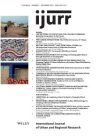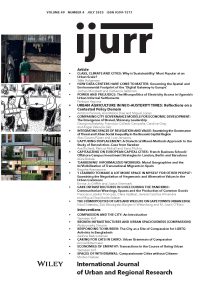The article addresses the role that communities played in managing the social and health crisis generated by the Covid-19 pandemic in two Chilean cities. Chile is an interesting case study owing to its intense and prolonged confinement measures, which focused heavily on individuals and households. Using key concepts such as communitarian weavings and care infrastructures, this research delves into the experiences of two neighborhoods in Talca and Concepción, employing qualitative methods, participant observation techniques and interviews with key actors to explore the everyday nature of community care ties and infrastructures. The findings reveal that, despite state restrictions, people experienced confinement in close physical proximity within their neighborhoods. Four key observations emerged: first, people adapted their actions to respond flexibly to existing and new needs; second, physical spaces such as streets, squares and local businesses became vital interaction venues; third, communitarian weavings were partially (re)constructed virtually; and fourth, these weavings adjusted their actions to meet contextual demands, generating new common goods that addressed community needs. Lastly, care infrastructures complemented or replaced the state’s inaction and the formal market. This illustrates that communitarian weavings demonstrated the flexibility to function effectively in diverse scenarios, both with and without state support.
Details
Written by:
Francisco Letelier Troncoso, Clara Irazábal, Javiera Cubillos Almendra, Miguel Sepúlveda Salazar
Digital Object Identifier (DOI)
https://doi.org/10.1111/1468-2427.13330
About DOI

